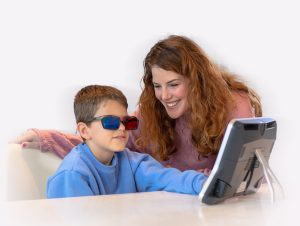Amblyopia, commonly known as lazy eye, can force children with the condition to spend the better part of a day with a patch over their dominant eye. Though the problem can sometimes clear up within mere weeks, the treatment may need to be in place for as many as two years — which, given the age range, are often formative ones socially.
NovaSight, however, has honed a new eye-tracking system, CureSight, which will bypass that issue by incorporating both eyes simultaneously into the training process. Following a 16-week, randomized controlled trial that proved the digital device was on par with the tried-and-true eye patch method in terms of vision test scores, the FDA recently approved CureSight for use in the U.S.
“Availability of a dichoptic digital treatment of amblyopia that matches the effectiveness of eye patching will help our patients have an alternative that also helps them deal with social and compliance challenges often associated with occlusion therapy,” said Michael Repka, a professor of ophthalmology at Johns Hopkins University. “This will help foster a more positive feeling about amblyopia treatment.”
NovaSight’s solution entails the patient donning red-blue treatment glasses during viewing of any streaming video content. Algorithms and eye-tracking technology inform the blurring of the center of vision of the image that is shown to the strong eye. The blurring is done with real-time image processing to encourage the brain to use details from the weaker eye to complete the image.
The four-month clinical trial found that just under 80% of CureSight patients showed at least two-line improvement on the Best Corrected Visual Acuity (BCVA) test, which is considered the most reliable and is therefore the most common assessment of vision. The study reached its primary noninferiority endpoint when 61% of patients in the patching group saw a two-line or better BCVA improvement.























